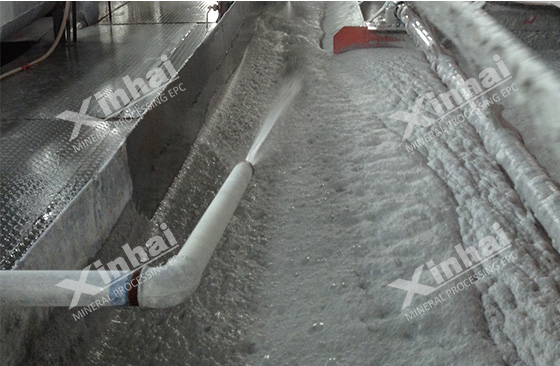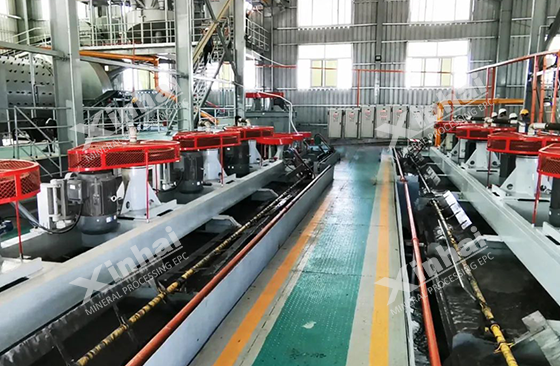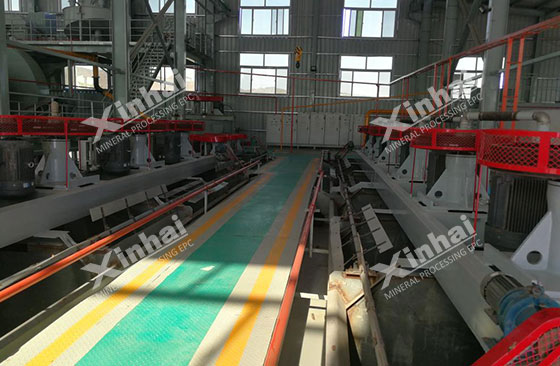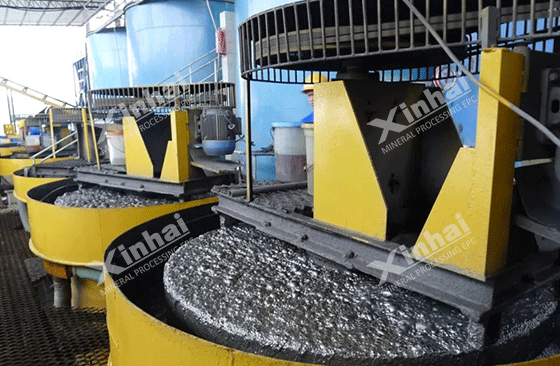
The oxidation of copper minerals will have a serious impact on the mineral processing process. This change not only involves the physical and chemical properties of the ore, but also directly affects the stability of its structure and structure. As oxidation proceeds, the surface properties of copper ore gradually change, making it difficult for traditional mineral processing processes to achieve the expected results. Specifically, oxidation will lead to a reduction in the degree of dissociation of copper minerals and changes in surface wettability, thereby significantly reducing the floatability and selectability of the ore. These changes increase the complexity and difficulty of the mineral processing process, forcing the adjustment of mineral processing technology and processes to adapt to the characteristics of oxidized ores. In addition, the oxidation process may also lead to the production of some harmful impurities, making the subsequent smelting process more challenging. Therefore, understanding and dealing with the oxidation phenomenon of copper minerals is the key to optimizing the mineral processing process and improving the utilization rate of copper ore resources. The following will give you a detailed introduction to the impact of oxidation on the copper ore beneficiation process.

Oxidized copper ore usually shows characteristics such as "light", "brittle" and "mud". These characteristics are more significant during the grinding process, making the ore easier to grind into slime. The generation of slime will bring many adverse effects to the copper ore beneficiation process, especially the flotation process. These fine slime particles are easy to aggregate and dope in the flotation tank. Even if a dispersant is added, it is difficult to effectively control the agglomeration of the slime, resulting in a greatly reduced flotation effect. The sludge will not only occupy the surface of the flotation foam and reduce the foam collection capacity, but also adsorb chemicals, resulting in increased dosage of chemicals but poor results. This series of factors work together to significantly reduce the copper recovery rate, seriously affecting the overall efficiency of mineral processing. Therefore, how to effectively deal with the problem of ore mudification has become one of the key challenges to improve the copper ore beneficiation effect and resource utilization.

Copper sulfide minerals generally have good floatability, but after oxidation, their floatability will decrease significantly. In order to restore floatability, copper oxide ores usually need to be sulfided and then flotated. However, when the ore contains chrysocolla, cuprite, black copper ore or complex combined minerals, it is difficult to achieve the ideal flotation effect even after sulfide treatment. This is because these minerals respond poorly to flotation reagents, resulting in lower recovery rates. Therefore, when processing such oxidized ores, more complex processes or adjustments to chemical formulas are often required to improve flotation efficiency.
Oxidized copper minerals have poor floatability. To improve this problem, it is usually necessary to adjust the conventional reagent system or perform additional treatment. However, these adjustments often cause the floatability of gangue minerals to change, which in turn reduces the selectivity of copper mineral flotation. The decrease in selectivity in the flotation process means that copper minerals and gangue minerals are difficult to separate effectively, resulting in a lower concentrate grade. In actual operation, in order to improve the quality of the concentrate, it is often necessary to increase the number of concentrations, reduce the concentration concentration, and even have to pay the price of a partial loss of recovery rate. This situation makes the copper ore beneficiation process more complicated and the cost increases, which has an adverse impact on the overall economic benefits.

During the mining, storage and transportation process, the oxidized copper ore is easily washed away by rainwater, resulting in the loss of copper metal. This loss not only includes the direct loss of water-soluble copper, but also affects its floatability due to the dissolution of oxides on the surface of the ore. Ores with different oxidation degrees will show different degrees of loss in this process. Generally speaking, the loss of metal recovery rate ranges from 15% to 40%. These losses are difficult to completely remedy during the flotation process, which directly affects the final recovery rate and economic benefits.
Processing copper oxide ores usually requires the use of more chemicals and more complex processes due to the complexity of the flotation process. For example, in order to improve the flotation effect, it is often necessary to use vulcanizing agents and dispersants, and may extend the flotation time or adopt technical means such as heating treatment. These measures not only increase the amount of chemicals used, but also increase energy consumption and equipment maintenance costs. Compared with copper sulfide ore, the processing cost of copper oxide ore is usually 10% to 50% higher, significantly increasing the overall production cost.

When processing copper ores with different degrees of oxidation, a comprehensive analysis is required to select the most suitable copper ore beneficiation method for treatment. This includes evaluating the degree of oxidation of the ore, the mineral composition, and the results of flotation tests in order to develop a targeted beneficiation plan. Reasonable selection and adjustment of process parameters, such as the type and dosage of sulfiding agents, flotation time and temperature, can effectively improve the copper ore beneficiation efficiency of oxidized ores. In addition, for newly mined sulfide copper ores, their storage and beneficiation time should be shortened as much as possible to prevent oxidation of the ore during storage and transportation. This not only helps to maintain the high floatability of the ore, but also effectively improves the metal recovery rate of copper and reduces the difficulty of subsequent processing. By optimizing ore management and beneficiation processes, enterprises can maximize resource utilization, reduce production costs, and improve economic benefits.
To find out more about our products and solutions, please fill out the form below and one of our experts will get back to you shortly.